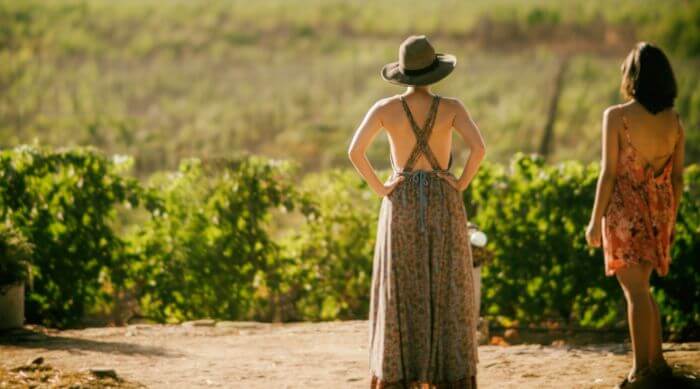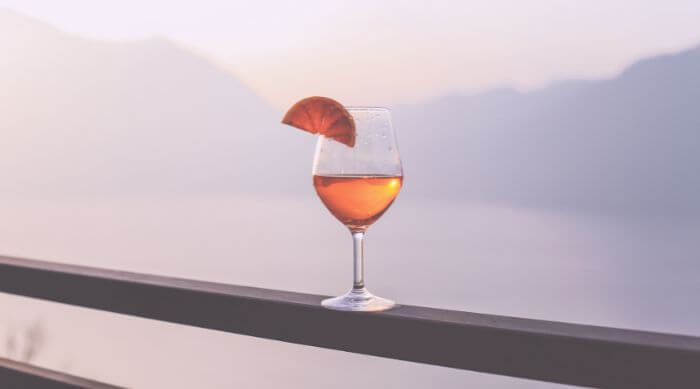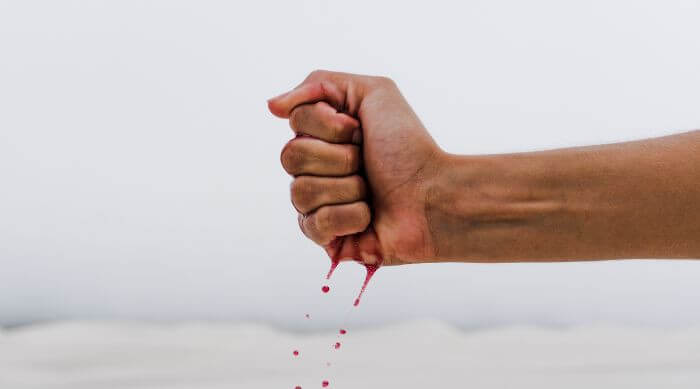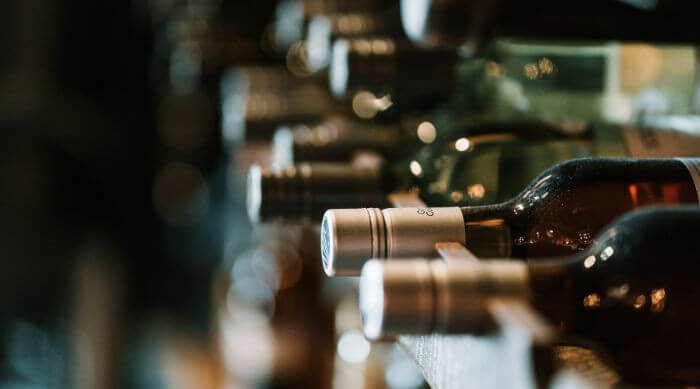Welcome to the ultimate beginner's guide to wine! If you're just starting your journey into the world of wine, you're in the right place. In this comprehensive guide, we'll cover everything you need to know about wine, from what to drink to how to drink it.
Are you ready to elevate your wine experience in a whole new way? Look no further than Surely's Non-Alcoholic Pinot Noir! Whether you're abstaining from alcohol, seeking a healthier option, or just curious to try something different, your taste buds will be delighted.
Table of Contents
Understanding Wine Types
Whether you're a beginner or a seasoned wine enthusiast, there's always something new to discover and enjoy in the world of wine.
Here's an overview of the different types of wine, their varieties, taste profile, and food pairings:
Red Wine
- Varieties: Red wines come in grape varieties such as Cabernet Sauvignon, Merlot, Pinot Noir, and Syrah (Shiraz).
- Taste Profile: Red wines are known for their rich, robust flavors. They often exhibit notes of dark fruits like blackberries, cherries, and plums. The aging process can add complexities like oak, tobacco, and leather.
- Food Pairing: Red wines pair well with red meats, hearty dishes, and aged cheeses.
White Wine
- Varieties: Common white wine varieties include Chardonnay, Sauvignon Blanc, Riesling, and Pinot Grigio.
- Taste Profile: White wines tend to be lighter and crisper than reds, with flavors ranging from citrus and green apple to tropical fruits and floral notes.
- Food Pairing: White wines pair excellently with seafood, poultry, light pasta dishes, and salads.
Rosé Wine
- Varieties: Rosé wines can be made from various red grape varieties like Grenache, Syrah, and Sangiovese.
- Taste Profile: Rosé wines have a delightful balance between the richness of red wines and the crispness of whites. They often feature notes of red berries, watermelon, and florals.
- Food Pairing: Rosé wines are versatile and pair well with a wide range of foods, from salads to grilled meats.
Sparkling Wine
- Varieties: The most famous sparkling wine is Champagne, but there are other notable options like Prosecco and Cava.
- Taste Profile: Sparkling wines are known for their effervescence, and they can range from dry to sweet. Expect flavors like green apples and citrus.
- Food Pairing: Sparkling wines are fantastic as aperitifs and pair beautifully with seafood, appetizers, and desserts.
Dessert Wine
- Varieties: Dessert wines encompass a wide range, including Port, Sherry, and late-harvest Rieslings.
- Taste Profile: These wines are sweet and luscious, with flavors of honey, dried fruits, caramel, and nuts.
- Food Pairing: They are best enjoyed with desserts, cheese, or as a dessert on their own.
Fortified Wine
- Varieties: Fortified wines like Port and Sherry are fortified with spirits, creating a higher alcohol content.
- Taste Profile: They can vary from dry to sweet, with complex flavors like nuts, spices, and dried fruits.
- Food Pairing: Fortified wines often pair well with nuts, blue cheese, and rich, chocolatey desserts.
Sparkling Rosé
- Varieties: Sparkling rosé combines the effervescence of sparkling wines with the fruity and floral characteristics of rosé.
- Taste Profile: Expect refreshing notes of red berries, citrus, and flowers, making it an ideal choice for celebrations.
- Food Pairing: Great for toasting and pairing with appetizers, seafood, and light fare.
Remember that within each of these wine types, there are numerous sub-varieties and regional expressions, making wine a diverse and exciting world to explore.
Etiquettes of Wine Tasting
What is a wine tasting? A wine tasting is an organized event where participants sample different wines, often guided by a sommelier, to assess their flavors, aromas, and characteristics.
Mastering these etiquettes will enhance your wine-tasting experience and impress fellow wine enthusiasts:
- Dress appropriately: Dress comfortably, but avoid strong perfumes or colognes that can interfere with your ability to smell the wine's aromas.
- Choose the right glass: Use clean, clear wine glasses with a tulip-shaped bowl. The shape concentrates the wine's aromas, enhancing your tasting experience.
- Observe the wine: Hold your glass by the stem to avoid warming the wine with your hand. Examine the wine's color and clarity by tilting the glass against a white background. Look for the “legs” (the drips along the inside of your wine glasses). The higher the alcohol content, the longer the legs.
- Swirl the wine: Gently swirl the wine in your glass to release its aromas. This helps aerate the wine and brings out its full bouquet.
- Sniff the aromas: Put your nose close to the rim of the glass and inhale gently. Try to identify the various scents, which can include fruits, spices, flowers, and more.
- Take notes: Keep a small notebook or use a wine-tasting app to jot down your impressions. Note the wine's name, vintage (year), color, aroma, and initial taste.
- Sip with attention: Take a small sip and let it coat your palate. Pay attention to the wine's flavors, acidity, sweetness, and tannins.
- Discuss and share: Engage in discussions with fellow tasters, sharing your impressions and listening to theirs. Wine tasting is often a social and educational experience.
- Stay open-minded: Be open to trying different wine varieties and styles. You might discover unexpected favorites.
- Enjoy responsibly: Remember that wine tasting is about enjoying the art of wine, so always drink responsiblyand designate a driver if necessary.
By following these wine tasting etiquette guidelines, you'll not only enhance your own enjoyment but also contribute to a more pleasant and respectful atmosphere for all wine enthusiasts.
Wine Club for Beginners
Wine clubs curate selections with approachability in mind, often featuring versatile and beginner-friendly wines. It's a chance to expand your wine education, taste wine, pair with various dishes, and connect with a community of fellow wine enthusiasts.
To find a wine club near you, start by conducting an online search using keywords like "wine club near me" or check platforms like Meetup.com for local wine-related groups and events.
Also consider visiting local wine shops, wineries, and wine associations, as they often have information about nearby wine clubs and tastings.
Choosing the Right Wine
Choosing the right wine to complement your meal can be a delightful and rewarding process. Here's a step-by-step guide to help you make the perfect wine selection:
Understand Your Preferences
Begin by understanding your personal preferences. Do you prefer red, white, or perhaps a sparkling wine? Do you like wines that are dry or sweet? Knowing your taste preferences is the first step.
Consider the Occasion
Think about the occasion. Are you celebrating a special event, having a casual dinner, or simply unwinding after a long day? The occasion can influence your wine choice.
Match the Wine With the Dish
The key principle here is to complement the flavors in your dish with the wine.
Consider these general guidelines for food pairings:
- Red Wine: Pairs well with red meats, hearty dishes, and rich sauces.
- White Wine: Complements lighter fare, seafood, poultry, and cream-based sauces.
- Rosé Wine: Versatile and pairs with a wide range of dishes, including salads, grilled vegetables, and Mediterranean cuisine.
- Sparkling Wine: Great as an aperitif or with appetizers, and it can be refreshing with seafood.
- Dessert Wine: Matches perfectly with sweet desserts or rich cheeses.
- Consider the Sauce: Sometimes, the sauce can be the determining factor. For example, a tomato-based pasta sauce goes well with red wine, while a lemon-butter sauce pairs better with white wine.
Think About Intensity
Consider the intensity of both the wine and the dish. For example, a robust Cabernet Sauvignon complements a rich, marbled steak, while a delicate Pinot Grigio complements a light pasta dish.
Regional Pairings
Explore regional pairings. Different wine-producing regions often have traditional food pairings that work well together. For instance, Italian wines like Chianti are natural partners for Italian cuisine.
Consider the Season
Think about the season and weather. Lighter wines like Sauvignon Blanc are refreshing in the summer, while heartier reds like Cabernet Sauvignon are perfect for cozy winter dinners.
Ask for Recommendations
If you're dining at a restaurant, don't hesitate to ask the sommelier or waitstaff for wine recommendations. They can provide expert guidance based on the menu and your preferences.
Budget Wisely
Keep your budget in mind. While there are excellent wines at various price points, it's essential to find a wine that matches your budget.
Enjoy the Experience
Finally, remember that wine is meant to enhance your dining experience. Savor the wine, savor the food, and enjoy the journey of exploring different wine and food combinations.
Choosing the right wine for your meal or experience can be an enjoyable and satisfying process. As you gain experience, you'll develop a deeper understanding of wine and its intricate relationship with food.
How to Serve Wine
Serving wine properly enhances the overall experience, whether you're hosting a dinner party or enjoying a bottle with a meal. Here's a beginner's guide on how to serve wine:
Select the Right Glassware
Choose appropriate wine glasses for red, white, or sparkling wines. The correct glassware follows these general guidelines:
- Red wine glasses: A wider bowl shape to allow for aeration.
- White wine glasses: A narrower bowl to preserve the wine's crispness.
- Sparkling wine glasses: A tall, narrow flute shape to preserve the effervescence.
Check the Temperature
Serve wine at the right temperature:
- Red wine: Slightly below room temperature, typically around 60-68°F (15-20°C).
- White wine: Chilled but not too cold, usually between 45-55°F (7-13°C).
- Sparkling wine: Well-chilled, around 40-45°F (4-7°C).
Steps to Open the Bottle
- Remove the foil or capsule covering the cork or screw cap.
- Use a corkscrew to gently extract the cork. Be careful not to damage it.
- If it's a screw cap, simply twist it open.
Decanting (Optional)
Some red wines benefit from decanting, which allows them to breathe and release their aromas. Pour the wine into a decanter, allowing it to sit for a while before serving.
Wines that benefit from decanting include:
- Young Red Wines: Decant to soften tannins and release aromas and flavors. Decanting for 1-2 hours is often suitable for these wines.
- Old Red Wines: Mature red wines, especially those with sediment, should be decanted to separate the wine from the sediment. Decant these wines carefully to avoid disturbing the sediment.
- Young White Wines: Some full-bodied white wines, like oaked Chardonnay, can benefit from decanting to allow them to open up and reveal their complexity. However, decanting is less common for white wines than reds.
- Aged White Wines: Aged white wines like older Rieslings, Chenin Blanc, and some vintage Champagne may benefit from decanting to soften their acidity and highlight their aromas.
- Vintage Port and Sherry: Fortified wines like Vintage Port and some Sherry styles can benefit from decanting to allow them to breathe and develop their flavors.
You typically don’t decant sparkling wines or light-bodied reds or whites.
Pouring
Hold the wine glass by the stem to prevent warming the wine with your hand (particularly with chilled wines).
For red and white wines, fill the glass to about one-third or halfway to allow room for swirling and releasing aromas.
For sparkling wines, pour gently down the side of the tilted flute glass to prevent excessive fizz.
Swirling and Smelling
Gently swirl your wine in the glass to help release the wine's aromas. Inhale the wine's bouquet by putting your nose inside the glass. Take a moment to appreciate the scents before sipping.
Serving Wine at the Table
When serving wine at a meal, start with white wines before moving on to reds. Sparkling wines can be served as an aperitif or for toasts. Pour a small amount of wine into each glass, and offer refills as needed.
Storing Leftover Wine
If you have leftover wine, recork it securely or use a wine stopper to preserve it. Store red wine in a cool, dark place. White wine should be refrigerated. Finish opened sparkling wine within a day or two to retain its fizz.
Enjoy Responsibly
Always encourage responsible drinking and be mindful of your guests' alcohol consumption, especially if they're driving.
Serving wine can be a simple yet enjoyable process when done correctly. It adds to the overall dining experience and allows you to fully appreciate the flavors and aromas of the wine you're enjoying.
Storing Wine
Proper wine storage is essential for maintaining the quality and taste of your wines over time and prevent spoilage. Whether you're building a small collection or storing a few bottles, select a location that is cool, dark, and stable in temperature and humidity.
Ideal storing conditions include:
- Temperature: Aim for a constant temperature between 45°F to 65°F (7°C to 18°C). Avoid extreme temperature fluctuations.
- Humidity: Maintain a humidity level between 50% to 70%. This prevents corks from drying out and wine from oxidizing.
- Light: Keep wine away from direct sunlight and fluorescent lighting, as they can prematurely age wine and cause "lightstruck" flavors.
- Vibrations: Store wine in a vibration-free area to prevent disturbance of sediment in bottles.
- Use Wine Racks: Invest in wine racks or shelving designed to hold wine bottles. Proper storage ensures that bottles are stored horizontally, keeping the cork moist and preventing air from entering the bottle.
Wine Regions
Below is your guide to some of the most popular wine regions around the world. Each region has its unique characteristics and wine styles that make it stand out in the world of wine.
Why does the wine region matter? The climate of the region where wine grapes are grown impacts the tasting notes of the wine. This is called the wine terrior. Taste is also affected by a wine’s texture, sweetness, acidity, and alcohol content.
Bordeaux, France
- Grapes: Predominantly Merlot, Cabernet Sauvignon, and Cabernet Franc
- Notable Subregions: Médoc, Pomerol, Saint-Émilion
- Wine Styles: Bordeaux wines are known for their French elegance and structure. Red Bordeaux often features flavors of blackcurrant, plum, and cedar, while white Bordeaux is crisp with notes of citrus and grass.
Napa Valley, California, USA
- Grapes: Cabernet Sauvignon, Chardonnay, Merlot
- Notable Subregions: Oakville, Rutherford, Stag's Leap District
- Wine Styles: Napa Valley is famous for its bold and full-bodied Cabernet Sauvignon wines. California Zinfandel wines are well-known for their rich and fruity flavors. Chardonnay and Merlot are also popular, producing rich and complex flavors.
Tuscany, Italy
- Grapes: Sangiovese, Cabernet Sauvignon, Merlot
- Notable Subregions: Chianti, Brunello di Montalcino, Bolgheri
- Wine Styles: Tuscany is known for its Sangiovese-based wines. Chianti is vibrant and cherry-driven, while Brunello di Montalcino is powerful and age-worthy. Super Tuscans blend Sangiovese with international varieties for a modern twist.
Rioja, Spain
- Grapes: Tempranillo, Garnacha, Graciano
- Notable Subregions: Rioja Alta, Rioja Alavesa
- Wine Styles: Rioja produces both red and white wines. Red Rioja is known for its aging potential, featuring flavors of red fruit, vanilla, and spice. White Rioja offers a range from crisp and citrusy to barrel-aged and nutty.
Marlborough, New Zealand
- Grapes: Sauvignon Blanc, Pinot Noir
- Wine Styles: Marlborough is celebrated for its vibrant Sauvignon Blanc with intense tropical fruit and herbal notes. Pinot Noir from this region is also highly regarded for its bright red fruit flavors.
Mendoza, Argentina
- Grapes: Malbec, Cabernet Sauvignon, Torrontés
- Wine Styles: Malbec is the star of Mendoza, producing deeply colored wines with dark fruit and spice. Cabernet Sauvignon and Torrontés are also noteworthy.
Mosel, Germany
- Grapes: Riesling, Müller-Thurgau
- Wine Styles: Mosel is renowned for its Riesling, which offers a range of sweetness levels from bone dry to lusciously sweet. Expect flavors of green apple, citrus, and mineral notes.
Hunter Valley, Australia
- Grapes: Semillon, Shiraz
- Wine Styles: Hunter Valley Semillon is a crisp and age-worthy white wine. Shiraz from this region tends to be medium-bodied with dark fruit and spice.
Exploring these popular wine regions is a fantastic way to begin your journey into the world of wine. Each region has its own charm and unique terroir, contributing to the diversity of wine styles available globally.
Wine FAQs
What wine should I drink as a beginner?
As a beginner, start drinking wine with lighter and more approachable profiles like Sauvignon Blanc for whites and Pinot Noir for reds.
How do I start liking wine?
To start liking wine, experiment with different styles of wine, pair them with foods you enjoy, and attend wine tastings or classes with fellow wine lovers to develop your palate and understanding of wine.
How is wine made?
Winemaking is the fermentation of crushed grapes or other fruits with yeast, which converts the sugars into alcohol, followed by aging to achieve the desired flavor profile.
What are the best red wines for beginners?
The best red wines for beginners typically include varieties like Merlot, Pinot Noir, and Grenache due to their approachable and fruit-forward flavors.
For many beginners, off-dry (also known as “Demi-Sec”) wines such as Moscato d'Asti and Pinot Noir are a great entree into wines.
What is a good dry wine?
The driest type of wine is typically a dry red wine like Cabernet Sauvignon, followed by dry white wines such as Sauvignon Blanc, the light-bodied Pinot Grigio, and Chardonnay.
What is a good sweet wine?
If you're looking for a good sweet wine to try, consider a Moscato, Riesling (especially from Germany or Alsace). You can also try a late-harvest dessert wine like Sauternes from France or Tokaji from Hungary. Both offer a balance of sweetness and flavor.
What are tannins?
Tannins are naturally occurring compounds found in the grape skins, seeds, and stems of wine grapes that contribute to the structure, bitterness, and astringency in wine.
Cheers!
You've completed the ultimate beginner's guide to wine. With this knowledge, you're ready to explore the diverse new world of wine drinkers. Whether choosing the right bottle of wine for yourself or as a gift, we hope you enjoy every sip to the fullest.
Join the growing community of wine enthusiasts who are discovering the pleasure of non-alcoholic wines. Order your bottle of Surely's Non-Alcoholic Sauvignon Blanc and immerse yourself in the vibrant flavors of citrus, green apple, and a hint of tropical fruit!
Remember that wine is about pleasure and discovery, so don't be afraid to try new wine varieties and savor every drop. Cheers to your wine journey!




